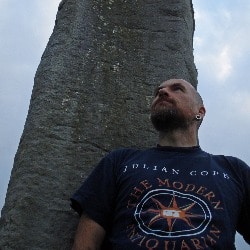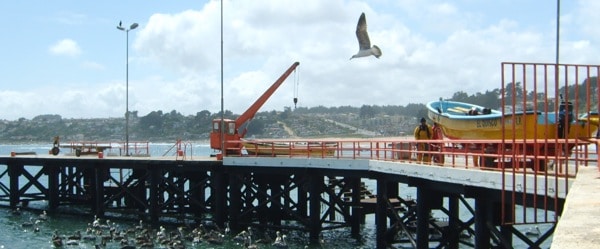Have you ever been looking through a box of slides and found something that you want to image or look at later, or even show to one of your colleagues or supervisor?
Finding that exact spot on the slide at a later date can prove to be difficult- using a marker pen on the coverslip is impractical as it can obscure other areas, whereas a diamond-point engraver risks cracking the coverslip.
Thankfully, there are specialised microscope accessories known as ‘finder slides’ designed specifically for this task. Finder slides have a printed grid of number and letter coordinates covering their surface, allowing you to note the specific location that relates to a desired area. The advantages of using finder slides include their versatility (they can be used on practically any microscope or by someone else using a similar finder slide), and the fact that they don’t require specialised object location software or a motorized stage.
This article describes some of the early developments of finder slides and a slide marker system, as well as contemporary finder slides and how to use them.
The Maltwood Finder Slide of 1858
One of the earliest references to a finder slide dates back to 1858 and was invented by Thomas Maltwood, who published his work in the Transactions of the Microscopical Society of London (1). In his account, he describes an initial attempt to draw a grid onto paper that was stuck to a glass slide. Unfortunately, ruling lines at such a small scale proved to be too difficult for accurately finding positions at a high magnification.
A friend of Maltwood suggested that he draw a larger scale which could then be photographed with the negatives scaled down and printed onto glass squares. Starting with a piece of paper that was ten inches squared, Maltwood painstakingly divided this into 1/50th inch squares and wrote latitudinal and longitudinal coordinates in each 1/5th square inch (a total of 38,400 numbers!). Maltwood passed his scale onto the microscope manufacturers Smith & Beck of London, who photographed it and subsequently produced the hand numbered Maltwood Finder slides.
The Webb Finder Slide of 1880
Despite William Webb’s humble work as a shorthand writer and clerk, he invented a pantograph that was presented at the Great Exhibition of London in 1851. Following on from this initial reproduction and scaling instrument, he invented a micro-engraving machine that used diamonds to etch onto glass. His machine was displayed and demonstrated at the London International Exhibition in 1862. On the strength of this invention, he was elected to become a member of the Microscopical Society of London in the same year. Around the time of the 1862 exhibition, Webb was producing many novelty slides with his invention that included engraved epigrams occupying 1/5000th of a square inch. His micro-engravings were so incredible that they were sometimes referred to as ‘bibles per square inch’. Indeed, it was reported that he was able to use his invention to engrave anywhere between 2 to 59 complete bibles in this area. However, his machine was put to more practical use, and in 1880 he was producing finder slides that rivalled the Maltwood Finder, with Webb boasting that his finder slides contained 16 squares in the same space occupied by one Maltwood square (a total of 20,000 more squares) (2).
The Gage Finder and Marker of 1895
In his 1895 paper published in the Proceedings of the American Microscopical Society (3), Simon Gage highlighted the problem face by fellow microscopists: how to re-find a point of interest on a microscope slide. Around the time that Gage wrote his paper, many devices were already in use to find microscopic points of interest; he categorized these into finder slides, slide markers, and microscope stage markers. The Gage Finder/Marker differed from finder slides that relied on grid localization, as his invention placed a circle on the coverslip to highlight the object of interest. The device looked like a small brass objective with a tiny revolving brush dipped in varnish. Once a desired object had been found, the Gage Finder was swung into place on the nosepiece and the brush was revolved around the object to create a circle.
Contemporary Finder Slides and How to Use Them
A number of finder slides are available to the microscopist today, including the Lovins (or Gurley) Micro-Slide Field Finder and the England Finder (named after its inventor, Charles Norman England).
Both of these slides have vacuum-deposited chromium grids on the surface that cover an area measuring 75 x 25 mm with letter and number coordinates providing a grid pattern of 1 mm squares. The squares on a Lovins Finder are sub-divided into 0.1 mm intervals, whereas the England Finder squares have a central reference circle with the precise number/letter coordinates surrounded by quadrants.
These modern day finder slides can be used on any microscope that has an XY stage movement of 75 x 25 mm, meaning that a specific object or area of interest on a slide can easily be found by a colleague using a finder slide from the same manufacturer.
To use a finder slide:
- Place the slide on the microscope stage and using the desired magnification, locate the area of interest. Mark the orientation on the frosted section of the slide (or the slide label).
- Without adjusting either the magnification or the stage position, carefully remove the slide and replace with a finder slide. Make sure that the finder slide is orientated correctly (most finder slides have orientation arrows or marks on their surface).
- Adjust the microscope focus wheels until the grid on the finder slide is in sharp focus and note the letter/number coordinates. The exact position can be further pinpointed using the 0.1 mm intervals on a Lovins Finder, or the quadrants/circle pattern on an England Finder.
- Conversely, to find an area of interest from a coordinate, place the finder slide on the stage and use the XY stage controls to locate the reference coordinate.
- Carefully replace the finder slide with the correctly orientated slide of interest, slowly adjust the focus and the desired object or area should be within the field of view.
Although research-grade microscopes can be equipped with motorized stages and position finders, many routine laboratory instruments are still reliant on mechanical stages. It can take a certain amount of time to find one specific area of interest on a slide, and finding that exact location again can take equally as long- especially if trying to describe the area and position to a colleague. However, if you are using a finder slide, the position can be relocated in as little time as it takes to move one slide from the microscope stage and replace with another. With finder slides, you never have to be lost again!
References
- On a Finder for Registering the Position of Microscopic Objects. Maltwood T. (1858) The Transactions of the Microscopical Society of London, Volume 6: 59-62.
- On an Improved Finder. Webb W. (1880) Journal of Microscopy 3 (5): 750-753.
- A Marker for Indicating the Position of Objects or Parts of Objects in Microscopical Preparations. Gage S. H. (1895) Proceedings of the American Microscopical Society 16 (2): 112-118.
For images of the slides and micro-engravings made by William Webb, visit this website; https://microscopist.net/WebbW.html





